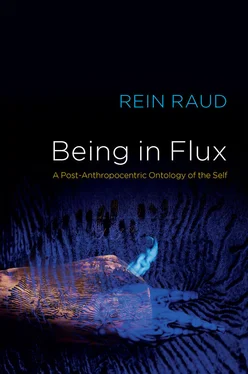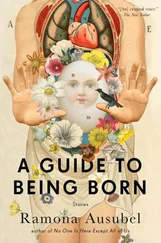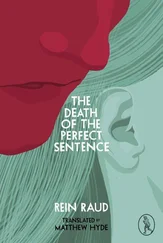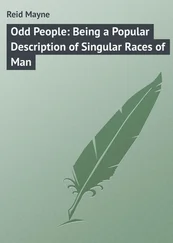In this book, I have tried to integrate and develop these views into a discourse that places both the self and the social into a still broader dynamic and relational context. What I am going to propose is a processual ontology of selfhood, seen as a momentarily existing field of constitutive tensions that refracts a multitude of heterogeneous causal chains, which are coming together to produce it, into a range of possible futures. This, as I hope will become clear in due course, is not as complicated as it sounds. We are real in every moment of the present, and only in the moment, but we are what our past has made us, and what our relations with others let us be. Our being acts as a prism, in which the various paths coming from the past and the multiple links to our others converge and act together to transform the sum of all these circumstances into a cone of possible futures, from which one will happen, and if all is well, we have a share in choosing which one of them is going to be the actually taken road. This prism of our instantaneous being is itself also in constant movement from one moment to the next, as various forces on the field of our selfhood are struggling with each other in order to increase their influence on the decision of picking the most appropriate future from those available. A self is never in complete balance, but neither is it ever completely unstable and still a self.
However, in a more basic sense, this way of being is not unique to the human subject. If there is one central thesis to this book, it is this: on every level, ‘being’ consists in fluctuating tensions that constitute relational patterns, and the imagined stability of entities is derived from flattened images of such tensions observed from an outside perspective. This does not mean that entities are somehow ‘not real’, if by ‘real’ we mean the capacity to participate in causal linkages. Nonetheless relations never occur between self-same and continuous things, stable objects, or egocentric particulars, but only between fields of constitutive tensions, and they are always formed on many different bandwidths simultaneously. While I hold this to be true on all possible levels of observation, this is of particular importance for the study of social, cultural and political phenomena. In those domains, the proposed theory will suggest a new way to approach the classic antagonism between the determining supra-individual forces (‘structure’) and the pre-social egocentric particulars (‘agency’ in the traditional sense of the word). Current literature seems to offer only two main alternatives to their dichotomy: either to solve the binary opposition in favour of either side, or to move them so close to each other that they end in a dialectical confluence, co-determining or mutually comprising each other to the extent that neither ‘structure’ nor ‘agency’ can be really identified any longer. But a third option emerges from a field model of causality. If action is taken to ensue from the discharge of tensions, which always occurs on several relatively independent levels simultaneously – for example, when the judgements passed in court depend not only on the legal details of the cases, but also on whether the judges are hungry, as shown in a study undertaken by Danziger et al. (2011) – we can dismiss the antagonism altogether and say that identifiable ‘structures’ and ‘agents’ only emerge as a result of conceptual extraction. 2But this does not imply that processes just go on of their own accord in one great and smooth flow. Differences are ubiquitous and tensions evolve from them constantly. Causal linkages emerge from these tensions and the momentary attainment of a relatively stable state at one point always upsets the balance or creates new tensions for another. It is natural that we ‘zoom in’ only on those states and circumstances that are relevant for our own circumstances and agendas, but we should not forget it is our perspective that this relevance depends upon.
Thus, regardless of whether we are talking about nations or cultures, large corporations or small groups, or individual persons, bacteria, stones, stars, galaxies or, conversely, the minimal ‘particles’ of elementary physics – none of these ever abides in a stable balance, even if the speed of their change may be either too quick or too slow to be noticed from the limited human point of view. This limitedness is also the reason why we tend to impute an objectively existing structure to the outside world – this helps us to navigate it with the least cognitive costs. It is simpler to live amidst flat and mostly solid surfaces as well as abstractions of a mostly black-or-white, yes/no type. The feeling that these structures are mind-independently real is the more persistent because it is possible to construe narratives with their help that have quite formidable explanatory power. And yet there is a limit to this power that is much narrower than the reach of abstract thinking that the human mind is capable of. More importantly, the belief in the self-sufficient existence of such mind-constructed structures makes it impossible for us to emancipate ourselves from the anthropocentric perspective they tacitly imply.
Throughout this inquiry, my quarrel is therefore not with the assertion, correctly identified as realist, that there is a reality which exists, as it is, independently of any observers. Nor do I doubt the fact that science provides us with the most adequate possible tools of gathering data about this reality. The problems start with the further claim that reality is structured in a way that approximately corresponds to our ideas about it, although, according to its proponents, this is a necessary characteristic of any realist worldview. This, I would say, is nonetheless not realism in the fundamental sense, but only in the sense given to the term by medieval scholastic philosophers. In the present context it should be more appropriately called ‘idealism’, because such an objective logical structure is an ideal thing claimed to exist independently of our minds.
Against this view, I will follow feminist philosophers of science such as Donna Haraway who maintain that the world is disclosed in a multitude of ways to different potential vantage points, regardless of whether there actually exists an observer who is physically present in these points and able to assemble the data available to it into a systematic vision. In other words, I hold that the claim of entities being real 3and existing in the world as ‘objects’ roughly in the way we perceive them cannot be substantiated without taking it for granted that our view of the world necessarily has to be the standard one. Therefore, I will argue that whatever we know about our world is actually conceptual extractions 4from it that have been formulated in a language that is particular to us. Neglecting this, I will try to show, has undesired and mostly unnoticed consequences, one of which is precisely that the structures we form in our mind, which often consist of clear-cut binary oppositions on different levels of abstraction, are projected onto the real world and thereafter perceived to be the reality that our minds and languages are imperfectly reflecting. A paradigmatic case of this is the tendency to credit anything that can be an object in the syntactic sense of the word, that is, appear in a sentence as the target of an action or observation, also with being an ‘object’ in the ontological sense of the word. It is quite legitimate to say ‘I can see the sky’, but it does not follow from this that a thing called ‘the sky’ objectively 5exists.
One of the methodical cornerstones of the discourse articulated here is the replacement of all distinctions of a black-or-white, yes/no type with gradients wherever possible. Such gradients may indeed have distinct, clearly definable situations (phases, stages) at either of their conceivable ends, or in the middle, as well as thresholds of significant transformation, but nonetheless they also contain grey areas, vague states, and intermittent becomings, and these arguably often form the bigger part of their existence span and/or are the parts of it where most significant changes are likely to happen. As the endpoint of this inquiry I would like to arrive at a discursive framework that bases human society and culture on a continuum not only with other life-forms, but also with things, natural phenomena, and any other way of existence, because only this, and not the premise of cutting us off from all other types of entities, 6makes it possible to describe what are the specifics, if any, of being ‘human’ in this world.
Читать дальше












